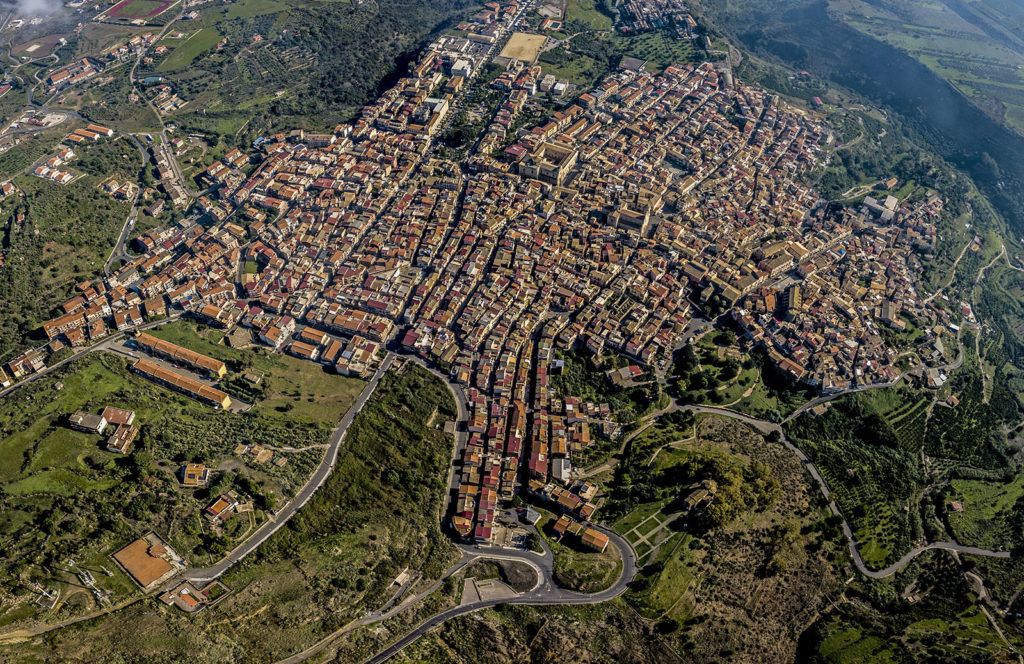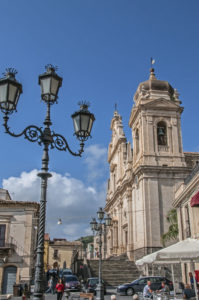The town of Militello in Val di Catania reached the height of its growth in the 17th century, and is one of the centres rebuilt on new sites following the great earthquake of 1693.
In fact, in these years the enlightened Prince Francesco Branciforte designed the new urban layout, already thinking about a possible expansion of the town. Located in the northern extremity of the Hyblaean Mountains, it was rebuilt further upstream, not far from the former site, according to a grid layout.

 The name Militellus, or Militum Tellus, land of soldiers, is said to come from the city’s Roman origins, though nothing has been proven yet. The first urban centre dates back to the Byzantine era, near the valley of the river Lèmbasi, to the south of the current township. This is evidenced by the transformation of the necropolises into homes and places of Christian worship. The main characteristic of Militello is, however, its strong connotation of a fortified centre. As a matter of fact, it remained a fiefdom until the end of the 18th century following the rule of the Barresi and Branciforte lords. The two main churches, those of Santa Maria della Stella (St. Mary of the Star) and San Nicolò (St. Nicholas), were razed to the ground by the earthquake and were rebuilt, in the upper part of the town, in the Baroque style of the Val di Noto.
The name Militellus, or Militum Tellus, land of soldiers, is said to come from the city’s Roman origins, though nothing has been proven yet. The first urban centre dates back to the Byzantine era, near the valley of the river Lèmbasi, to the south of the current township. This is evidenced by the transformation of the necropolises into homes and places of Christian worship. The main characteristic of Militello is, however, its strong connotation of a fortified centre. As a matter of fact, it remained a fiefdom until the end of the 18th century following the rule of the Barresi and Branciforte lords. The two main churches, those of Santa Maria della Stella (St. Mary of the Star) and San Nicolò (St. Nicholas), were razed to the ground by the earthquake and were rebuilt, in the upper part of the town, in the Baroque style of the Val di Noto.